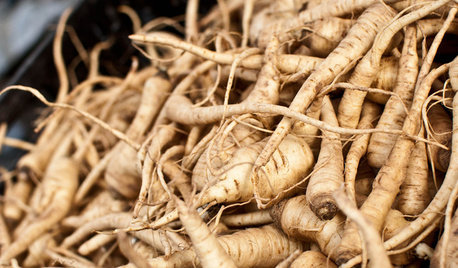LOOKING for: What sweeteners do you use?
LifeIsSweet
21 years ago
Related Stories

APARTMENTSHouzz Tour: Sweetening the Penthouse Deal
With a newly dramatic interior design — including a sexy lounge — this Portland home is now living up to its potential
Full Story
HOLIDAYSSweeten Your Days With a DIY Advent Calendar
Tuck candies and small gifts into packets you make yourself for a simple holiday wall hanging
Full Story
HANUKKAHSweeten Your Hanukkah With a Dessert Table for All Ages
Homemade treats and creative thinking amp up a crafter's holiday table that you can easily re-create
Full Story
Guest Picks: Sweeten Your Home With Art Evoking Valentine's Day
Get some love in the air with prints that say it with words or put your home in the pink with pictures
Full Story0

GARDENING GUIDESSweeten a Summer Garden With Pink Flowers
Whether you stir in hot pinks or sprinkle in some pastels, pink blooms can make your garden deliciously pretty
Full Story
REMODELING GUIDESDecorated Ceilings Are Looking Up
Whether with a simple coat of paint or intricate molding, ceilings are getting some long-deserved attention in interior designs
Full Story
GARDENING AND LANDSCAPINGEdible Flowers Offer a Sweet Taste from the Garden
Flowers that beautify the landscape can also pretty up the plate or sweeten a spread
Full Story
COOL-SEASON CROPSCool-Season Vegetables: How to Grow Parsnips
This unfairly maligned root vegetable is the ideal choice for a winter garden, sweetening with the frost and having a long storage life
Full Story
EDIBLE GARDENSThe Enticing Garden: How to Grow Bananas
Sweeten your dining table with surprising flavors of banana cultivars while adding tropical flavor to your garden
Full Story
LIFEHow Do You Make Your Tea and Coffee in the Morning?
A morning cup is a must for many, and preparation comes in many guises. We look at coffee and tea habits across the Houzz community
Full StorySponsored
Your Custom Bath Designers & Remodelers in Columbus I 10X Best Houzz



sharlanet
dotpy
Related Discussions
What do you use your food mill for?
Q
LOOKING for: Zucchini....what do you do with it?
Q
LOOKING for: Mustard Recipe using sweetened condensed milk
Q
LOOKING for: Smoothie Recipes-Fruit Juice to Sweeten?
Q
MEMA_WI
susan_in_nc
monica2001
Marie_TX
Bethintokyo
Terrapots
luv4pets
yellowhair
teri2
puc13
compumom
gardengardengardenga
simgirl
abreeze
cattknap
Terrapots
RuddMD
meg_va
rosieo
rosieo